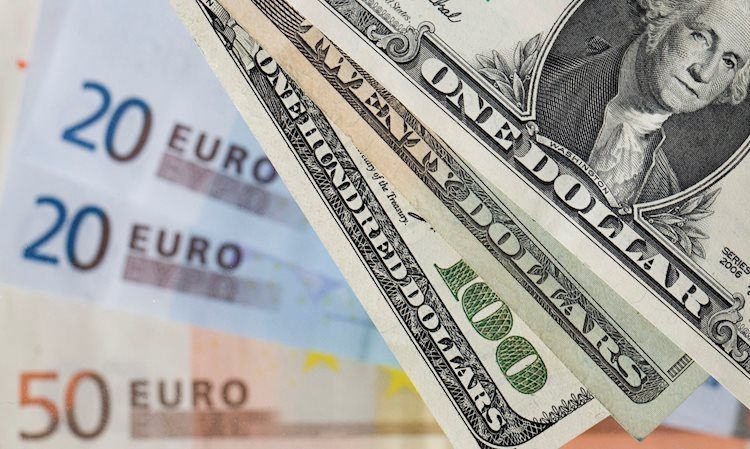- EUR/USD caught a much-needed bullish bounce on Monday.
- Euro-focused economic data remains limited until Friday.
- Key US inflation and growth figures land just in time for the US holiday.
EUR/USD scrambled for higher ground on Monday, clipping back into the 1.0500 handle amid a broad-market relaxing of Greenback bidding as investors step back into a risk-on mood, albeit with limited impact. Overall market flows are set to be crimped this week with the back half of the week’s US market sessions hobbled by the impending US Thanksgiving holiday on Thursday and limited market hours on Friday.
This week sees a firm drought of EU-based datapoints through most of the week, with a fresh round of European Harmonized Index of Consumer Prices (HICP) inflation slated for Friday. Preliminary pan-EU HICP inflation for November is set to swing higher on an annualized basis, a looming threat that European Central Bank (ECB) policymakers have been scrambling to get out in front of. According to ECB officials, a near-term uptick in broad EU inflation metrics shouldn’t be a cause for concern for investors.
The Federal Open Market Committee’s (FOMC) latest Meeting Minutes will be released later in the day on Tuesday, giving traders a glimpse into the Federal Reserve’s (Fed) latest discussions about the direction of interest rates looking forward. Wednesday will follow up with another update to US Personal Consumption Expenditure Price Index (PCEPI) inflation, a key reading of price increases underpinning the US economy. Wednesday also brings a quarterly update of UIS Gross Domestic Product (GDP) growth. Annualized core PCEPI inflation is set to accelerate again in October and forecast to increase to 2.8% from the previous 2.7%. QoQ US GDP growth in the third quarter is expected to hold steady at 2.8%.
EUR/USD price forecast
EUR/USD caught a bid on Greenback softness to retest the 1.0500 handle on Monday. Bids remain unable to break through the key technical metric neatly, and Fiber is set to continue struggling with familiar technical barriers in the near-term. EUR/USD price action has found a little bit of breathing room after hitting a 24-month low late last week, but the climb up is looking very far for Fiber bulls to reclaim anything approaching bullish territory.
EUR/USD daily chart
Euro FAQs
The Euro is the currency for the 19 European Union countries that belong to the Eurozone. It is the second most heavily traded currency in the world behind the US Dollar. In 2022, it accounted for 31% of all foreign exchange transactions, with an average daily turnover of over $2.2 trillion a day. EUR/USD is the most heavily traded currency pair in the world, accounting for an estimated 30% off all transactions, followed by EUR/JPY (4%), EUR/GBP (3%) and EUR/AUD (2%).
The European Central Bank (ECB) in Frankfurt, Germany, is the reserve bank for the Eurozone. The ECB sets interest rates and manages monetary policy. The ECB’s primary mandate is to maintain price stability, which means either controlling inflation or stimulating growth. Its primary tool is the raising or lowering of interest rates. Relatively high interest rates – or the expectation of higher rates – will usually benefit the Euro and vice versa. The ECB Governing Council makes monetary policy decisions at meetings held eight times a year. Decisions are made by heads of the Eurozone national banks and six permanent members, including the President of the ECB, Christine Lagarde.
Eurozone inflation data, measured by the Harmonized Index of Consumer Prices (HICP), is an important econometric for the Euro. If inflation rises more than expected, especially if above the ECB’s 2% target, it obliges the ECB to raise interest rates to bring it back under control. Relatively high interest rates compared to its counterparts will usually benefit the Euro, as it makes the region more attractive as a place for global investors to park their money.
Data releases gauge the health of the economy and can impact on the Euro. Indicators such as GDP, Manufacturing and Services PMIs, employment, and consumer sentiment surveys can all influence the direction of the single currency. A strong economy is good for the Euro. Not only does it attract more foreign investment but it may encourage the ECB to put up interest rates, which will directly strengthen the Euro. Otherwise, if economic data is weak, the Euro is likely to fall. Economic data for the four largest economies in the euro area (Germany, France, Italy and Spain) are especially significant, as they account for 75% of the Eurozone’s economy.
Another significant data release for the Euro is the Trade Balance. This indicator measures the difference between what a country earns from its exports and what it spends on imports over a given period. If a country produces highly sought after exports then its currency will gain in value purely from the extra demand created from foreign buyers seeking to purchase these goods. Therefore, a positive net Trade Balance strengthens a currency and vice versa for a negative balance.
Read the full article here

